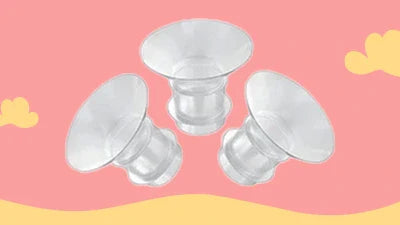Breast Pump Flange Sizes Guide for New Moms


Breast Pump Flange Sizes 101 Everything New Moms Need to Know
Breastfeeding is a beautiful journey, but for many moms, it has its own challenges. One of the greatest challenges would be the usage of a breast pump comfortably and effectively. An important part often overlooked is choosing the correct breast pump flange size. A pump flange that doesn’t fit properly may result in discomfort, less milk, and even long-term damage to the nipple. In this flange sizing chart guide, we’ll cover all you need to know about breast pump flange sizes, why it matters, and how to find that perfect fit for you.
Breast Pump Flanges 101
A breast pump flange, or plasma nipple, is the funnel-shaped part of a breast pump that goes over your nipple and creates suction to extract milk. Nipples have a variety of shapes and sizes so flanges come in a variety of sizes as well. This will allow your nipple to move freely within the tunnel of the flange for comfortable and effective pumping.
What Is The Importance Of Flange Size?
When it comes to woman breast pumping, It is critical to choose the proper size of flanges for several different reasons:
-
Convenience: Finding the right flange size for your breast ensures no nipple pressure or pain.
-
Efficiency: Considering breast pump sizes enables optimal milk flow, leading to more efficient breast pumping sessions.
-
Prevents Nipple Trauma: A nipple flange, when of the right size helps prevent soreness, cracks or blisters.
-
Prevents Clogged Ducts & Mastitis: Incorrect sizing can cause milk stasis, significantly increasing the risk of breastfeeding complications.
-
Promotes Milk Production: Using an adequately sized pump flange allows for a larger volume of milk extraction without unnecessary pressure.
How to Know What Your Flange Size Is
Looking up an appropriate flange sizing chart can assist, but measuring the circumference of your nipple directly is the most accurate way. Here’s how:
Directions to Measure:
-
Step 1: Pump for a Few Minutes: This will help make sure that your nipple is its regular size during a pumping session.
-
Step 2: Measure Nipple Diameter: With a ruler or caliper, measure the width of your nipple (without the areola) in millimetres.
-
Step 3: Add 24mm To Your Measurement: This extra space ensures your nipple has enough space in the pump flange to move freely without excessive friction.
-
Step 4: Compare With Standard Breast Pump Flange Sizes: Using a flange sizing chart (provided by your pump manufacturer) find the matched closest size.
Suggested Guide
-
If your nipple is 16mm, use a 19-21mm flange.
-
For a 18mm nipple choose a flange size of 21-23mm.
-
For example, if your nipple is 20mm across, you would want a 24mm flange.
-
For example, If you have a 22mm nipple and a 26mm flange.
-
As for a 24mm nipple, choose a 28mm flange.
If your flange is too tight or your nipple is rubbing on the sides, you might need a larger size. You might require a smaller size if your areola pulls into the flange tunnel.
Final Thoughts -
Choosing the correct breast pump flange size is essential for pumping comfortably and successfully. Proper nipple flange measurements and the right pump flange will help prevent discomfort, facilitate milk expression and make breastfeeding a smoother journey for you. If you have ever had any painless milk flow or just difficulty pumping, re-check your flange size, then talk to a lactation expert. Once you’ve gotten an idea of your flange size, start shopping for a high-quality online breast pump flange from the Bump2Cradle website.
Ensuring you have the correct breast pump flange size will help make your woman breast pumping sessions more comfortable and efficient, with less strain on your body while supporting your breastfeeding goals more easily.
Frequently Asked Questions -
When to change flange size?
If your nipples feel sore and painful, or if your milk supply has decreased, then it could be time to have another look at your flange size. Check out a flange sizing chart to find the right pump flange.
How do I measure my pump flange size?
Measure your nipple diameter, and look at a flange sizing chart. Your nipple should glide in the breast flange tunnel with no extra rubbing.
Does pump size affect flange size?
It can be painful and cause poor expression of milk, and even some trauma to your nipples if you’re using an ill-fitting pump flange.
How do you calculate flange size?
Simply measure the nipple in mm and then add 2 or 4mm to see what flanges size would be the best.
What is the use of 24mm for breast pump?
A suitable size for a nipple measuring between 20-22mm would be a 24mm flange size. A 28mm flange may be more suited for your nipple that is 22-24mm.
